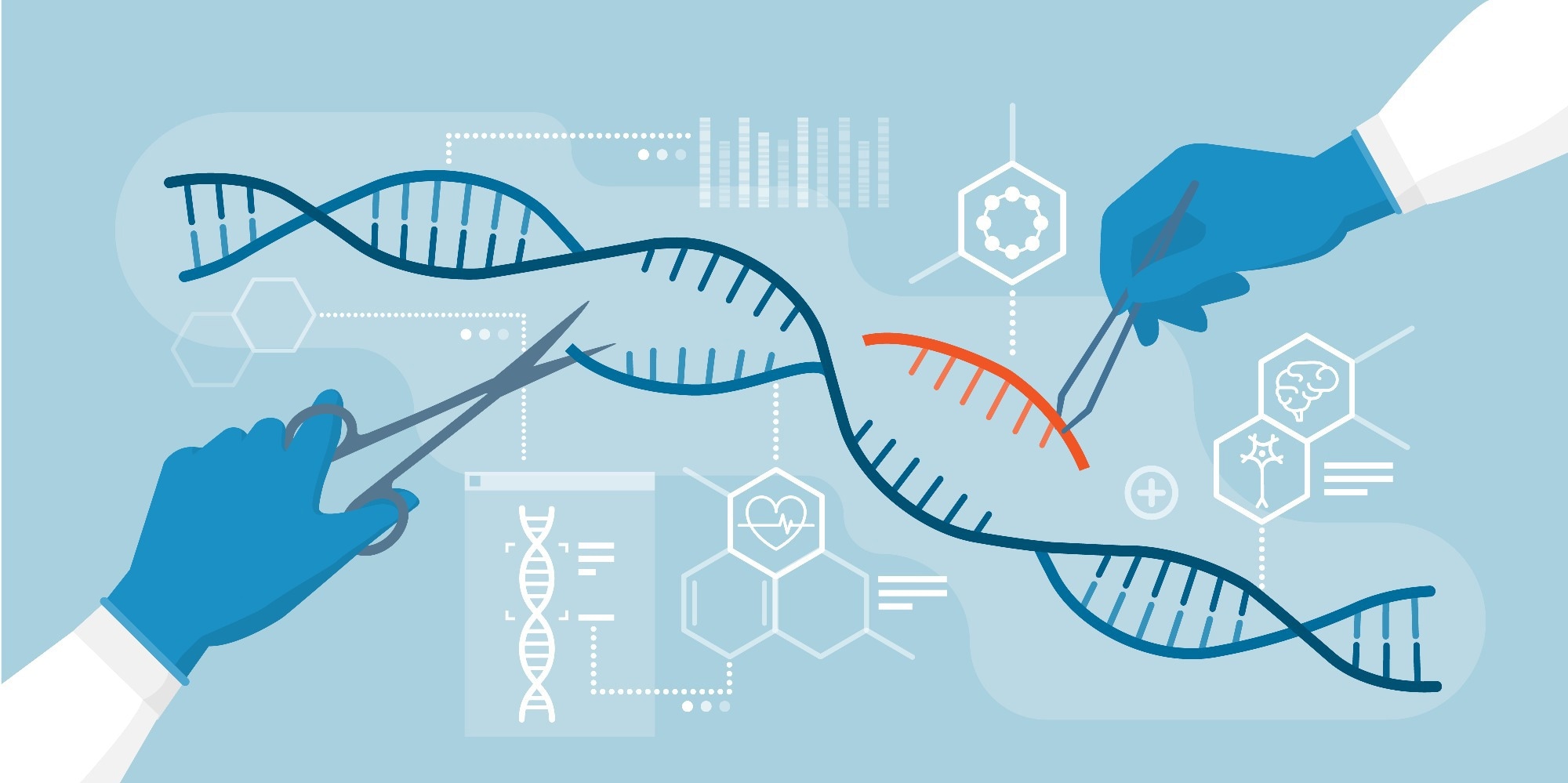Worldwide clinical studies for gene therapy utilizing CRISPR/Cas9 gene editing are now underway for a number of disorders. A study from Boston Children’s Hospital that was released in Nature Communications on June 27th, 2022, alerts readers to a possible CRISPR editing risk that has not yet been identified.

Image Credit: elenabsl/Shutterstock.com
The Department of Pathology at Boston Children’s Hospital, under the direction of Roberto Chiarle, MD, and Jianli Tao, PhD, has studied classical CRISPR/Cas9 in several human cell lines and demonstrated for the first time that the method may result in significant DNA rearrangements using a procedure known as retrotransposition.
When DNA breaks go unrepaired and mismatched ends connect, rearrangements happen. Although CRISPR-induced retrotransposition events were rare (happening up to 5–6% of the time in the study’s experimental model), they had the potential to cause cancer.
The scientists recommend including assays for retrotransposition in the safety evaluation of CRISPR/Cas9 editing systems. In order to confirm that the intended gene has been introduced or deleted in the correct location, current test methods either sequence short lengths of DNA or are made to look for small gene rearrangements. Researchers do not search for significant retrotransposition-related rearrangements.
We hope our findings will encourage investigators using CRISPR/Cas9 to include a check for insertion of mobile elements. CRISPR is really a game-changer in genetic therapy, so it’s very important to know exactly what it does to ensure its safety.”
Roberto Chiarle, MD, Study Senior Author, Department of Pathology, Boston Children’s Hospital
Rogue rearrangements
DNA sequences referred to as “mobile elements” travel from one place in the genome to another during retrotransposition. They multiply by using enzymes, which also cause a break in the DNA double helix where they insert themselves. This occurs often in nature and is usually harmless; in fact, mobile elements, sometimes known as “jumping genes,” now account for around one-third of the human genome. However, they have also been connected to diseases including cancer.
Double-strand breaks are also created by CRISPR in DNA. As a result, mobile elements are more likely to insert themselves at both intended and unwanted DNA regions, according to research by Chiarle, Tao, and colleagues. This raises the likelihood that retrotransposition will occur and cause mobile elements to alter the DNA at the desired locations.
We did CRISPR in multiple cell lines, including those commonly used in many labs, and found an average rate of retrotransposition of up to 5 to 6 percent. This is a low number, but many gene therapies are meant to target millions of cells. For example, in blood disorders, CRISPR may be used to edit a few million blood stem cells, which are then reinfused into the patient. To initiate a tumor, you may sometimes need just one cell with a transposition event.”
Roberto Chiarle, MD, Study Senior Author, Department of Pathology, Boston Children’s Hospital
Chiarle emphasizes that this investigation was entirely experimental and conducted in lab-based cells. “We need to determine how often retrotransposition happens in clinical trials of CRISPR gene therapies,” Chiarle adds.
Tao puts up the experimental setup to confirm a pre-existing test known as PolyA-seq. The most frequent mobile element, LINE-1, is used in the test to find instances of retrotransposition.
We think this test could help detect these events more reliably, and it may be more cost-effective than the method that’s commercially available.”
Jianli Tao, PhD, Department of Pathology, Boston Children’s Hospital
Base editing safer?
Additionally, base editing, a more recent, more accurate method that chemically alters only one base or “letter” of the genetic code (C or A) without generating a double-strand break in DNA, makes retrotransposition considerably less common, according to Chiarle, Tao, and their collaborators.
Less than 0.01% of the time saw the detection of retrotransposition events. Additionally, they were less prevalent when using prime editing, a robust method that allows for targeted insertions, deletions, and all 12 potential base alterations.
“We demonstrate that both base editors and prime editors are much safer and are associated with very low retrotransposition events compared to CRISPR/Cas9,” Chiarle concludes.
Source:
Journal reference:
Tao, J., et al. (2022) Frequency and mechanisms of LINE-1 retrotransposon insertions at CRISPR/Cas9 sites. Nature Communications. doi.org/10.1038/s41467-022-31322-3.